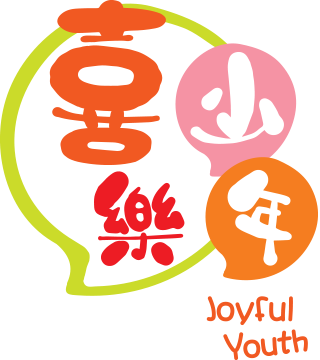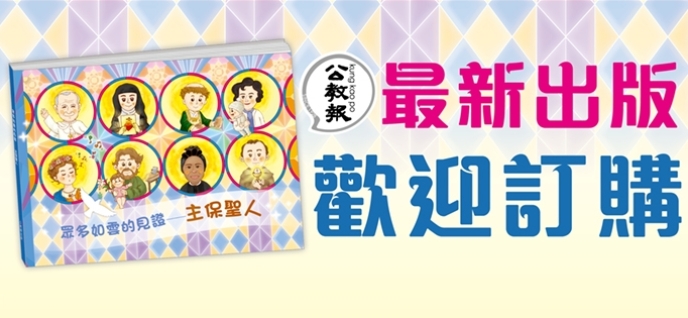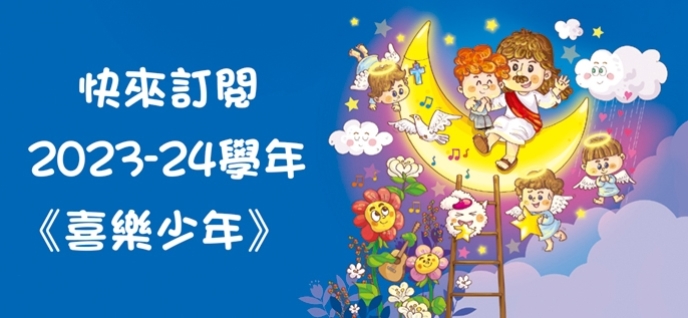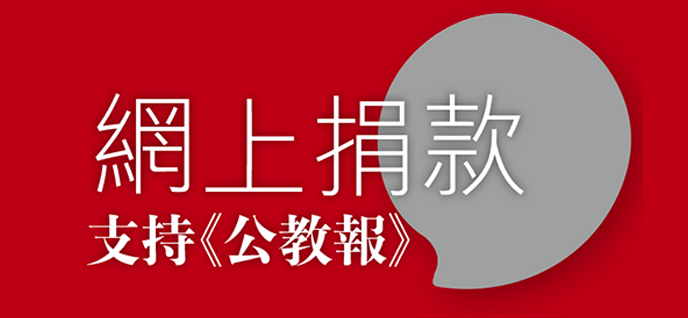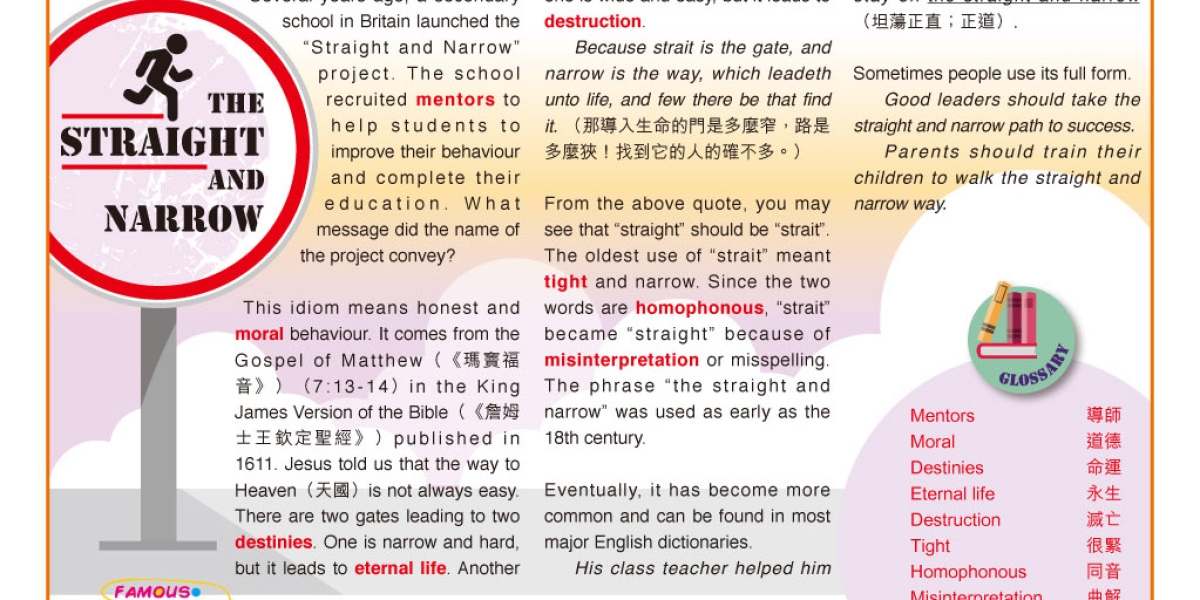
The straight and narrow
Several years ago, a secondary school in Britain launched the “Straight and Narrow” project. The school recruited mentors to help students to improve their behaviour and complete their education. What message did the name of the project convey?
This idiom means honest and moral behaviour. It comes from the Gospel of Matthew(《瑪竇福音》)(7:13-14)in the King James Version of the Bible(《詹姆士王欽定聖經》)published i n 1611. Jesus told us that the way to Heaven(天國)is not always easy. There are two gates leading to two destinies. One is narrow and hard, but it leads to eternal life. Another one is wide and easy, but it leads to destruction.
Because strait is the gate, and narrow is the way, which leadeth unto life, and few there be that find it. (那導入生命的門是多麼窄,路是多麼狹!找到它的人的確不多。)
From the above quote, you may see that “straight” should be “strait”. The oldest use of “strait” meant tight and narrow. Since the two words are homophonous, “strait” became “straight” because of misinterpretation or misspelling. The phrase “the straight and narrow” was used as early as the 18th century.
Eventually, it has become more common and can be found in most major English dictionaries.
His class teacher helped him stay on the straight and narrow (坦蕩正直;正道).
Sometimes people use its full form.
Good leaders should take the straight and narrow path to success.
Parents should train their children to walk the straight and narrow way.
Glossary
Mentors 導師
Moral 道德
Destinies 命運
Eternal life 永生
Destruction 滅亡
Tight 很緊
Homophonous 同音
Misinterpretation 曲解
